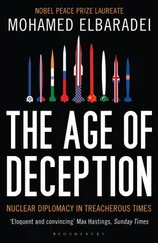A good example of what appears to be the use of the diaspora for intelligence purposes is the story of Axis Information and Analysis (AIA). This outfit described itself as an ‘information agency that unites professionals having years of experience in collecting and analysing information about Asia and Eastern Europe’. It claimed to be focused upon ‘states that constitute a threat to regional and international security, as well as upon areas of ethnic and religious conflict’. Its main mission was to produce rather good information about defence, security and intelligence issues. A typical day’s headlines, on 25 February 2009, included items such as ‘Former Czech chief-of-staff works in company with person suspected of ties with Soviet intelligence’; ‘Estonian investigators pass opinion why did Herman Simm betray his native country’; ‘Attempt of bombing of synagogue in Ukraine not considered act of terrorism’ and ‘Russia has at least 500 secret service agents in Vienna 20 years after Cold War’.
From 2005 I was a regular visitor to AIA’s website, www.axisglobe.com. 2The information was a clever mix of local media reports, seasoned with intelligent observations and occasional bits of first-hand reporting. It was topical, accurate, well presented and concise, if in slightly stilted English. So who was writing it? I had never met any of the people listed on the site as contributors, though after more than twenty-five years dealing with the region I would have expected to have heard of such evidently expert and well-informed colleagues. Nor had I met anyone else who had. Nor did Google show them as having any existence elsewhere. AIA said that some of its authors were still in government service and that they, and some other contributors, used pen names. It self-consciously added an air of mystery by claiming to use ‘journalists, ex-diplomats, and former officers of the special services of a number of Asian and East European countries ’ [my italics]. 3
The site did not require payment and had no advertising. My initial assumption was therefore that it was part of an information-warfare effort, aimed at planting skewed stories or disinformation in a seemingly credible wider stream of news. But intense scrutiny of the AIA output, even on the subjects I knew best, revealed no consistent pattern that supported this theory. The tone was pleasantly astringent towards the Russian services and their rivals alike. I took discreet soundings from intelligence professionals in the region. They turned out to be fans of AIA, with the same curiosity about its origins and purpose. The site was registered via an American hosting company, with all further details privacy-protected. I tried writing to the supposed editor, Michel Elbaz, and got an evasive reply in return. Eventually I gave up worrying and simply used the site as a handy compendium of news and analysis, assuming that it must have some kind of business model that I was too stupid to grasp. Had I looked a bit harder, I might have found some clues suggesting the opposite.
The pace of contributions to the site slackened in late 2009 and it became inactive in 2010. It was still a useful repository for historical information – particularly as I was beginning to research this book. In mid-2010, the whole site went behind a pay wall, demanding a log-in and password but giving no indication of how to acquire one. Frustrated, I emailed Mr Elbaz again, simply asking him to invoice me for access to the archived material on the site. Any normal company would have responded to that – at least to ask how much I was prepared to pay. AIA did not respond. This fired my interest again. If AIA was not trying to make a profit, someone had sponsored it. But who? And why? It had no visible do-gooding or academic affiliation. I started investigating more vigorously. 4
A bit more digging brought a real breakthrough: the identity of one of the AIA contributors. He turned out to be a colleague: Āris Jansons, a well-known Latvian journalist and an acquaintance of mine for nearly twenty years. He had worked at Radio Free Europe in Prague after the collapse of the Soviet Union. When its Latvian service closed in 2004, he returned to Riga to look for a job. In January 2006 he was browsing the web and noticed a mistakenly identified picture in an AIA story. He emailed the site to point out the error, and after receiving an initially dismissive reply from Mr Elbaz then received a rather friendlier letter offering him a job as the Baltics correspondent. Mr Jansons was intrigued. The money was good and, more importantly, the editorial quality was impressive. I have reviewed numerous emails between the two men, provided by Mr Jansons. Mr Elbaz’s brief to his new writer was a model of editorial professionalism. He gave a step-by-step guide to AIA’s needs. One priority was to avoid duplication with any other English-language source. Another was to use a snappy, and preferably intriguing, headline. Concision, relevance and topicality were vital. The only slightly puzzling aspect was an instruction to avoid any direct criticism of the regime in Uzbekistan. But that was hardly going to be a big deal for a correspondent in the Baltics. The first year went well, with generous pay and plenty of demand. Mr Jansons wrote excellent articles, under a pseudonym. After that, AIA began to plead poverty. Payments slowed and stopped. Eventually Mr Elbaz offered Mr Jansons shares in the company in lieu of pay, which he turned down. Mr Jansons found another job and apart from grumbling about his unpaid fees, thought no more of it: freelance life is like that.
So what was AIA really? It was run by a Russian: Mikhail Falkov. He had emigrated to Israel – as it happens from Soviet-occupied Latvia – in the 1970s. He is the longstanding owner-editor of IzRus, a prominent Russian-language website there. He is also a former PR adviser to the controversial Israeli politician, currently foreign minister, Avigdor Lieberman, a Soviet-born immigrant whose hard-line approach (towards both Arabs and dovish Israeli officials) and fondness for the regime in Russia arouse considerable controversy. 5Mr Lieberman once worked as a nightclub bouncer. In April 2011 he was charged by the State Prosecutor’s Office with fraud, breach of trust, money laundering, and witness tampering; he denies all wrongdoing, and the case was pending as this book went to press. In the eyes of his critics, he has imported thuggish Soviet-style attitudes and habits into Israeli politics. Mr Falkov’s IzRus website in 2009 carried an article denouncing Israeli embassies abroad which could be seen to echo Mr Lieberman’s dislike of his own diplomats. It said they were ‘fertile ground for orgies, sex with minors, sexual harassment and bribery’ which was ‘hidden from the public’. 6There would be those who might see Mr Lieberman, and his sidekick Mr Falkov, as prime examples of how Russia exerts its influence in other countries.
Mr Falkov declines to answer any questions about AIA’s finances, genesis and aims. It may well be that from his point of view it was indeed a purely business venture, which simply failed to gain the advertising that he hoped for. I am not accusing him of anything improper. But a few lines of text on the website give a tantalising hint of another explanation for its existence: suggesting a connection with the world of espionage, not of mere news. On the ‘about us’ section of the site, visitors were told:
AIA is open to cooperation on a commercial basis with those who possess exclusive and current information on policy and security issues in the countries of Asia and Eastern Europe… AIA accepts orders for collecting and analysing information on any issue that concerns policy and security… [it] can be either supplied confidentially to the client, or appear on our website.
Читать дальше












